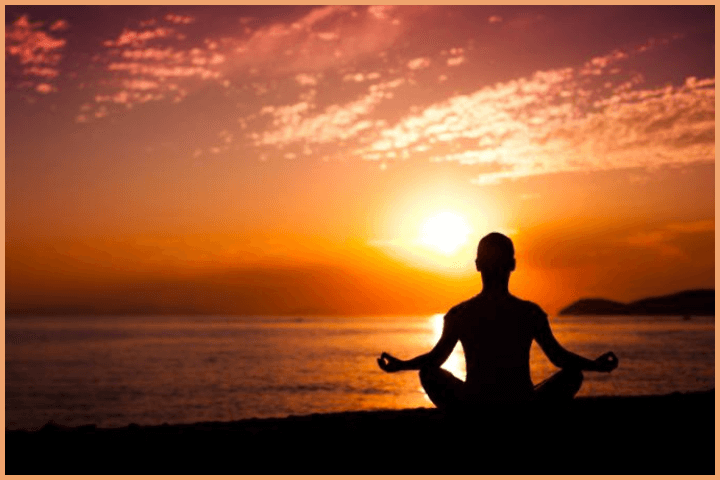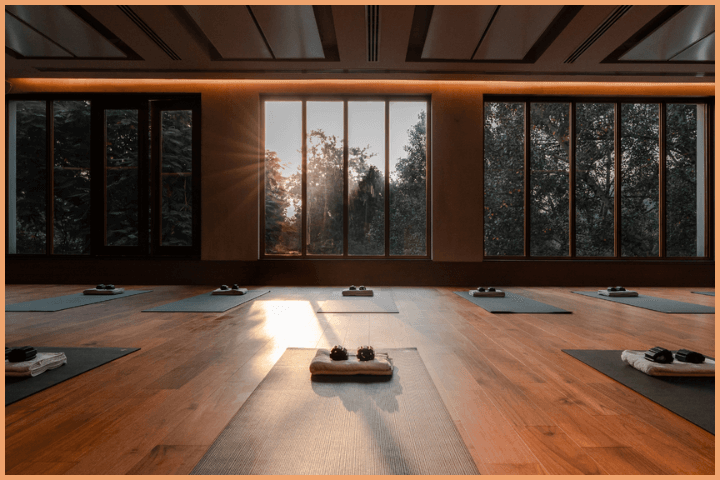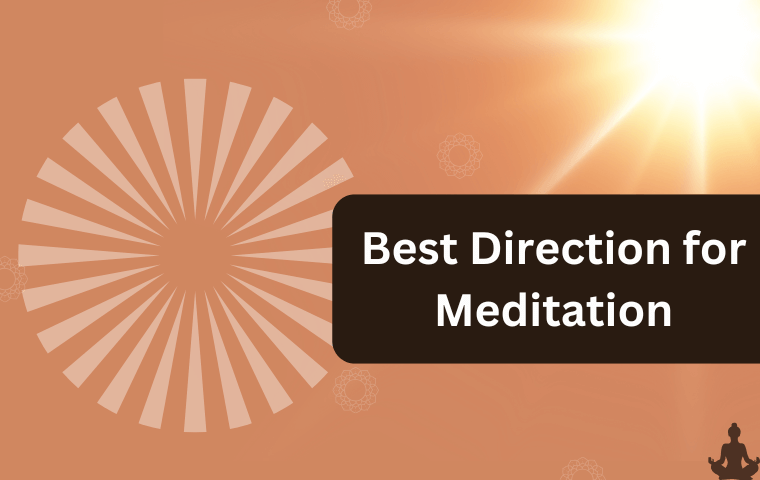Meditation is a decisive tool that can help us achieve inner peace, improve focus, and foster personal growth. But did you know that the direction you face while meditating can have a profound impact on your practice? Whether you’re a seasoned meditator or a beginner, the direction you face during meditation can influence your spiritual and mental state.
Understanding the Influence of Direction

In meditation, the four cardinal directions, North, South, East, and West, carry unique energy and symbolism. These directions have distinct qualities that can enhance or hinder your practice. Various ancient traditions, such as Yoga and Vastu Shastra, emphasize the significance of facing specific directions to align with natural energies that support a deeper and more enriching meditation experience.
The Role of the East in Meditation
Among all the cardinal directions, East is widely considered the most beneficial for meditation. In both yogic teachings and Vastu Shastra, the East represents new beginnings, enlightenment, and spiritual awakening. Facing East allows you to connect with the rising sun’s energy, which symbolizes clarity, growth, and positive transformation. People believe that eastward energy stimulates mental clarity, enhances focus, and provides a sense of balance, making it an ideal direction for meditation.
The gentle rays of the morning sun are believed to align with the body’s natural rhythms, promoting a peaceful and focused state during meditation. Facing East is thought to support a serene and productive session, whether you meditate for relaxation, self-reflection, or spiritual development.
North and Northeast: Additional Beneficial Directions
While the East is often the preferred direction, the North and Northeast also hold special significance in meditation.
- Facing North: The Earth’s magnetic field promotes grounding and stability, and it associates with the North. Meditating while facing North can help you feel centered and rooted. Practices that aim to calm the mind and promote deep relaxation often recommend facing this direction. It’s particularly effective when you need to focus inward and reconnect with your sense of inner peace.
- Northeast: This direction combines the qualities of both North and East. In Vastu Shastra, the Northeast corner is considered a powerful point of spiritual energy, making it a great location for meditation. It’s believed to encourage spiritual growth, self-awareness, and a deeper connection with the universe. If you’re unable to face directly East or North, the Northeast offers a harmonious balance of energies.
The Science Behind Direction and Meditation

It may seem surprising that the direction you face could impact your meditation, but there’s science behind it. Our bodies respond to magnetic fields, with each direction carrying its own unique natural energy. For example, facing East or North is thought to align your body’s energy with the Earth’s magnetic field, helping to improve your focus and spiritual awareness. Just like adjusting the sails of a boat to catch the wind, positioning yourself correctly can help you make the most of these subtle but powerful forces.
Does the Exact Direction Matter?
You might be wondering if it’s necessary to face exactly East, North, or Northeast to experience the full benefits. The answer is not as strict as it seems. While traditional teachings recommend specific directions, the most important factor is how the direction makes you feel during meditation. It’s less about the precision of the angle and more about your personal connection to the energy that each direction brings. You can experiment by adjusting your angle slightly and observing how each direction affects your concentration and mindfulness.
Personalizing Your Meditation Space
Creating a meditation space that aligns with the best direction for meditation can amplify your practice. Here are a few tips for designing a sacred space:
- Choose the Right Room or Corner: As per Vastu Shastra, the Northeast corner of your room is ideal for setting up a meditation area. This space harnesses the energy needed to elevate your practice.

- Use Natural Elements: Add elements like plants, fresh flowers, or soft lighting to create a peaceful environment. The goal is to make the space inviting and conducive to relaxation.
- Consider Aromatherapy: Scents like jasmine or sandalwood essential oils can purify the air and enhance the atmosphere of your meditation space, helping you stay calm and focused.
Group Meditation and Collective Energy
In a group meditation session, the collective focus of the group can amplify the energy of the chosen direction. When all practitioners face the same direction, it creates a unified flow of energy, making the experience more powerful for everyone. The space should be arranged to ensure that all participants are aligned with the desired direction to harness the full benefits.
The Importance of Experimentation
While the traditional advice is to face East, North, or Northeast, your personal preferences and goals should guide your choice. Meditation is a deeply personal practice, and experimenting with different directions can help you discover which one resonates most with you. Whether you’re seeking tranquility, enlightenment, or grounding, the right direction can enhance your meditation and lead to deeper mental clarity and spiritual insight.
Finding Your Perfect Direction
The best direction for meditation depends on your goals and the kind of energy you wish to harness. While facing East is often considered the most beneficial direction for spiritual awakening and focus, North and Northeast also offer powerful advantages. By incorporating the right direction into your meditation practice, you can unlock deeper states of mindfulness, relaxation, and clarity. Take the time to explore different directions and find what works best for you, creating a meditation routine that aligns with your personal needs and aspirations.

